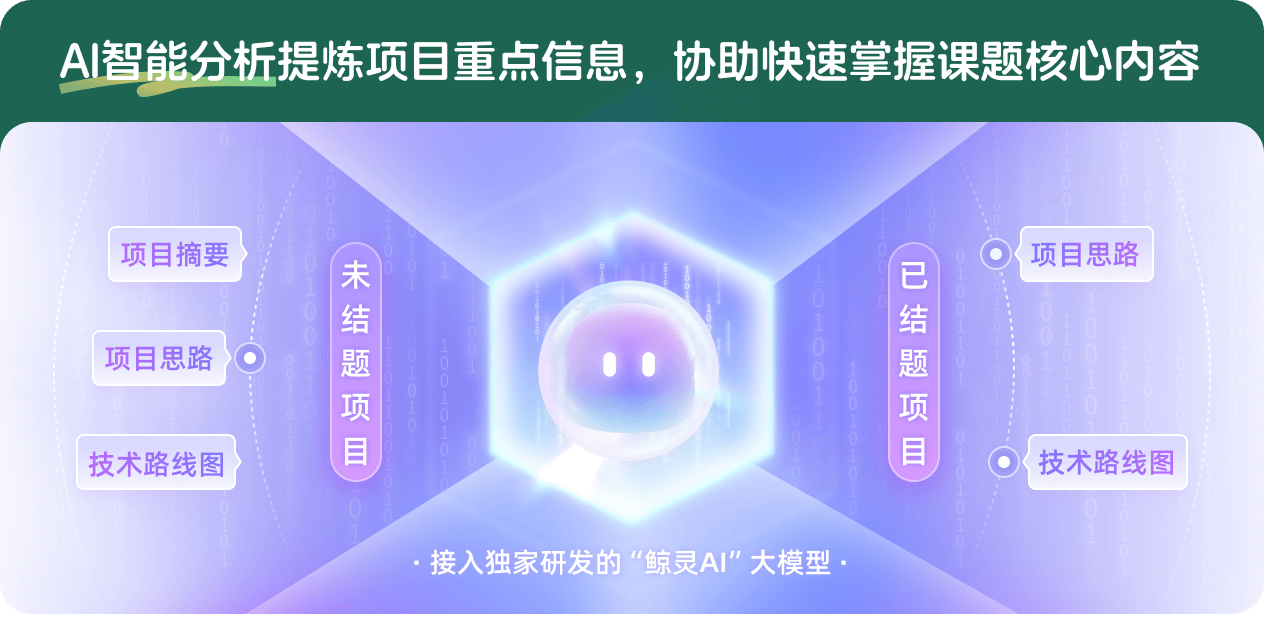含时轨道自由密度函数方法(TD-OFDFT)研究量子尺寸金属纳米粒子的局域表面等离子体共振
项目介绍
AI项目解读
基本信息
- 批准号:51601187
- 项目类别:青年科学基金项目
- 资助金额:20.0万
- 负责人:
- 依托单位:
- 学科分类:E0110.金属生物与仿生材料
- 结题年份:2019
- 批准年份:2016
- 项目状态:已结题
- 起止时间:2017-01-01 至2019-12-31
- 项目参与者:汤莹莹; 崔美艳; 王琳; 徐锦秋; 邱超群; 张万万;
- 关键词:
项目摘要
The localized surface plasmon resonances (LSPRs) are electromagnetic modes of metal nanoparticles, associated with the collective oscillations of the free electrons on metal particles surfaces. Under resonant excitation, metal nanoparticles present a variety of light–matter interactions, leading to novel applications in many important fields. Although the plasmon resonances of nanoparticles with diameters exceeding 10 nm (classical size) have been well characterized, LSPRs of nanoparticles below this size (quantum size) are poorly understood. That is because in quantum size regime, plasmon resonances become more sensitive to the quantum nature of the conduction electrons, resulting in an extremely challenging in both experimental and theoretical investigations. In theory, the quantum size, especially 2nm–10nm, is too small for classical electromagnetic theories to be valid but too large for full-fledged quantum simulations to be feasible. In this proposal, first we will use the developed time-dependent orbital-free density functional theory (TD-OFDFT), which has been proved to retain the high accuracy at a fraction of its computational cost, to study the LSPRs properties of quantum-size sodium single and coupled nanoparticles. Based on these studies, we want to build the relationship between the intrinsic factors of shape, size, the arrangement of particles and the distance between particles, and LSPRs properties, in order to provide the important theoretical basis for experiments. Second, we will develop the noble metal Ag available TD-OFDFT, applying this method to study the actual LSPRs system.
局域表面等离子体共振(LSPRs)是金属纳米粒子特有的电磁模式,源于导电电子在金属表面的集体振荡。处于共振激发时金属纳米粒子表现出许多有趣的光-物质相互作用,使其应用于众多重要领域。尽管经典尺寸(直径大于10纳米)纳米粒子的LSPRs性质已被充分地研究,然而当纳米粒子进入量子尺寸(直径小于10纳米)LSPRs对导电电子的量子性质变得非常敏感,致使实验和理论上面临极大的挑战。理论上经典理论不能描述量子效应;而全量子理论由于计算量太大又不能计算大尺寸体系(2-10纳米)。在本课题中,我们首先将采用适用于金属钠的赝势含时轨道自由密度函数方法(Na-TD-OFDFT,已被证明计算成本低且高精度)研究量子尺寸钠纳米单粒子和多聚体的LSPRs性质。建立纳米粒子形状、尺寸、粒子间的排列方式和距离与LSPRs性质之间的关系,为实验研究提供理论依据。其次,我们将发展适用于金属银的赝势TD-OFDFT方法。
结项摘要
我们采用赝势含时轨道自由密度函数方法,系统地研究了纳米粒子的形状与粒径以及排列方式对量子尺寸金属纳米粒子局域表面等离子体共振(LSPRs)的响应模式、能量和峰宽的影响规律。揭示了纳米粒子的LSPRs纵向响应模式的能量与粒子的长径比呈线性关系,峰宽与长径比和粒径大小成反比;横向响应的高阶模式随长径比的增大而增强。阐明了相对于外场纳米粒子的排列方式只影响LSPRs纵向和横向响应模式的吸收强度,而不会影响响应波长。基于我们的研究结果,可通过调整纳米粒子的长径比和排列方式来实现金属纳米材料吸收波长的调控,以及金属纳米棒在纵向和横向响应模式之间的切换。此外结合我们的理论研究,与实验课题组开展了金属纳米粒子的光学性质研究以及它在催化领域的应用。
项目成果
期刊论文数量(5)
专著数量(0)
科研奖励数量(0)
会议论文数量(0)
专利数量(0)
In Situ Self-Assembly of Ultrastable Gold Nanoparticles on Polyvinyl Alcohol Nanofibrous Mats for Use as Highly Reusable Catalysts
聚乙烯醇纳米纤维垫上超稳定金纳米粒子的原位自组装,用作高度可重复使用的催化剂
- DOI:10.1021/acsomega.9b03436
- 发表时间:2019-11
- 期刊:ACS Omega
- 影响因子:4.1
- 作者:Lin Xu;Hongping Xiang;Zhengjian Chen;Xu Zhang
- 通讯作者:Xu Zhang
Quantum Plasmonics in Nanorods: A Time-Dependent Orbital-Free Density Functional Theory Study with Thousands of Atoms
纳米棒中的量子等离子体:数千个原子的瞬态无轨道密度泛函理论研究
- DOI:10.1021/acs.jpcc.9b10510
- 发表时间:2019-12
- 期刊:The Journal of Physical Chemistry C
- 影响因子:--
- 作者:Hongping Xiang;Zhilue Wang;Lin Xu;Xu Zhang;Gang Lu
- 通讯作者:Gang Lu
Simulated electron diffraction patterns of ω-Fe in Fe-C martensite
Fe-C马氏体中α-Fe的模拟电子衍射图
- DOI:10.1063/1.5065432
- 发表时间:2019-01
- 期刊:Journal of Applied Physics
- 影响因子:3.2
- 作者:D. H. Ping;H. P. Xiang
- 通讯作者:H. P. Xiang
数据更新时间:{{ journalArticles.updateTime }}
{{
item.title }}
{{ item.translation_title }}
- DOI:{{ item.doi || "--"}}
- 发表时间:{{ item.publish_year || "--" }}
- 期刊:{{ item.journal_name }}
- 影响因子:{{ item.factor || "--"}}
- 作者:{{ item.authors }}
- 通讯作者:{{ item.author }}
数据更新时间:{{ journalArticles.updateTime }}
{{ item.title }}
- 作者:{{ item.authors }}
数据更新时间:{{ monograph.updateTime }}
{{ item.title }}
- 作者:{{ item.authors }}
数据更新时间:{{ sciAawards.updateTime }}
{{ item.title }}
- 作者:{{ item.authors }}
数据更新时间:{{ conferencePapers.updateTime }}
{{ item.title }}
- 作者:{{ item.authors }}
数据更新时间:{{ patent.updateTime }}
其他文献
其他文献
{{
item.title }}
{{ item.translation_title }}
- DOI:{{ item.doi || "--" }}
- 发表时间:{{ item.publish_year || "--"}}
- 期刊:{{ item.journal_name }}
- 影响因子:{{ item.factor || "--" }}
- 作者:{{ item.authors }}
- 通讯作者:{{ item.author }}

内容获取失败,请点击重试

查看分析示例
此项目为已结题,我已根据课题信息分析并撰写以下内容,帮您拓宽课题思路:
AI项目摘要
AI项目思路
AI技术路线图

请为本次AI项目解读的内容对您的实用性打分
非常不实用
非常实用
1
2
3
4
5
6
7
8
9
10
您认为此功能如何分析更能满足您的需求,请填写您的反馈:
项红萍的其他基金
ω-Fe及其对碳钢组织形成作用的研究
- 批准号:51971159
- 批准年份:2019
- 资助金额:60 万元
- 项目类别:面上项目
相似国自然基金
{{ item.name }}
- 批准号:{{ item.ratify_no }}
- 批准年份:{{ item.approval_year }}
- 资助金额:{{ item.support_num }}
- 项目类别:{{ item.project_type }}
相似海外基金
{{
item.name }}
{{ item.translate_name }}
- 批准号:{{ item.ratify_no }}
- 财政年份:{{ item.approval_year }}
- 资助金额:{{ item.support_num }}
- 项目类别:{{ item.project_type }}




















